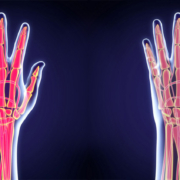Why Are You Napping?
I think people get frustrated with research because, just like I’ve described this week, one study says one thing while another comes to different conclusions. I hope that if you’ve been reading the Memo long enough you won’t be frustrated. In this case, why might studies that seem similar on the surface come up with different results?
First, while the studies seemed to ask the same questions, the studies actually had different objectives. In the Swedish study that showed a reduction in cardiovascular disease (CVD) events for those napping once or twice a week, the subjects were selected because they had not had any cardiac events or diagnosis of CVD. That means that any CVD that took place in the follow-up period was a primary event. In the other two studies, high-risk CVD events were excluded in one but other CVD factors were allowed such as hypertension.
Second, the purpose of the Swedish was designed to look at the development of CVD. The other two studies from Switzerland and the U.K. recruited over 500,000 subjects, but the research questions appeared to be decided after the studies began. There’s nothing wrong with that, but just because you have collected data on many variables, including genetics, doesn’t mean the data collected answer the research questions that were asked.
For example, the premise was that daytime napping causes CVD and hypertension. It seems likely that those conditions could cause fatigue, which would require daytime napping. Even if that were not the case, the subjects appeared to already have problems sleeping, which would impact hormone levels that contribute to CVD such as cortisol levels and many others.
The Bottom Line
These large studies attempted to make sense out of prior research that showed a link between daytime napping and CVD. What I think these studies demonstrate is that the cause of the nap is important. If it’s a planned nap designed to allow digestion or a pause in a long work day, it may not be hazardous to your heart health. However, if a person doesn’t sleep well or has sleep apnea and is fatigued because of that, being forced to nap during the day to recover can indicate a higher risk of developing CVD and hypertension.
Diet, body mass, lack of exercise, and other factors all have a role to play in sleep quality and CVD as well. If you plan your nap, you’re in control. If you’re forced to nap, time to look at your lifestyle and see what you can change.
What are you prepared to do today?
Dr. Chet
P.S. Just for fun, these are a few of Riley’s more inventive napping positions. Oh, to be that flexible! Maybe the monkey blanket helps.
References:
1. Heart. 2019;105:1793–1798.
2. J Am Heart Assoc. 2022;11:e025969. DOI: 10.1161/JAHA.122.025969.
3. Hypertension. 2022;79:00–00. DOI: 10.1161/HYPERTENSIONAHA.122.19120.









